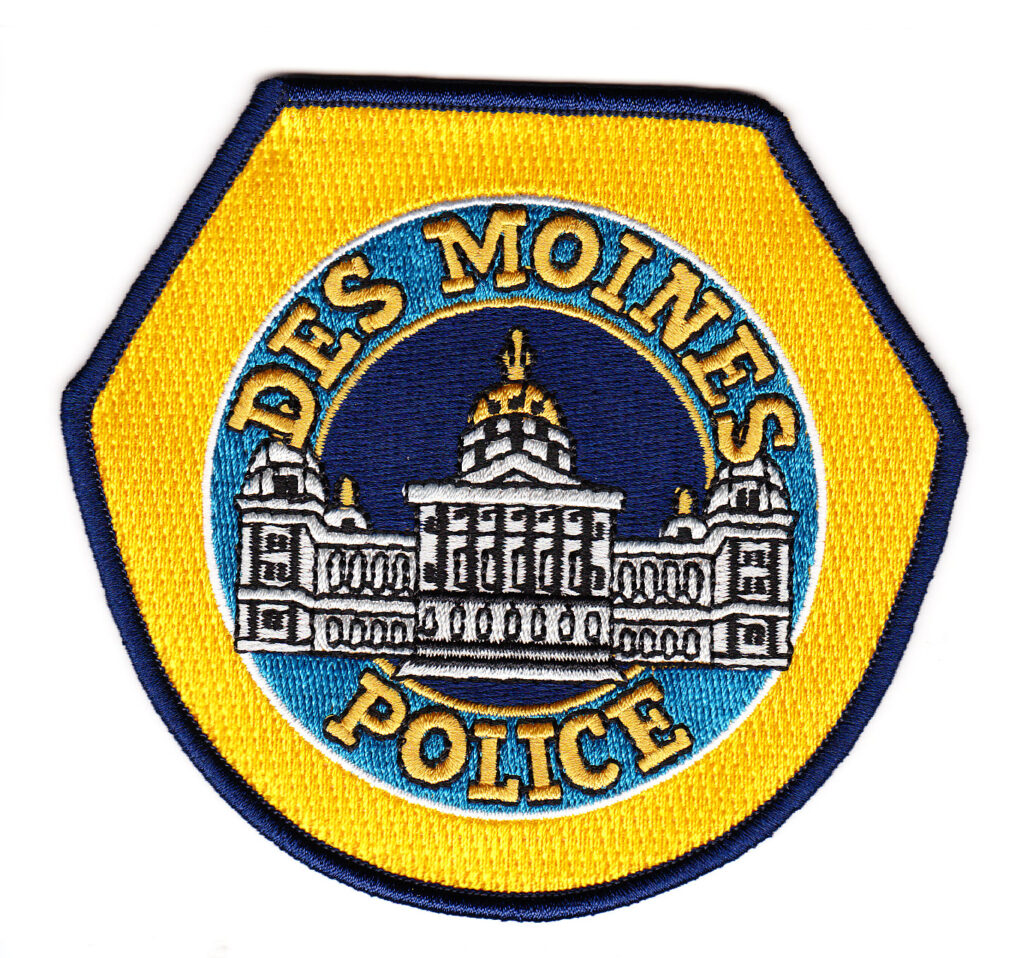
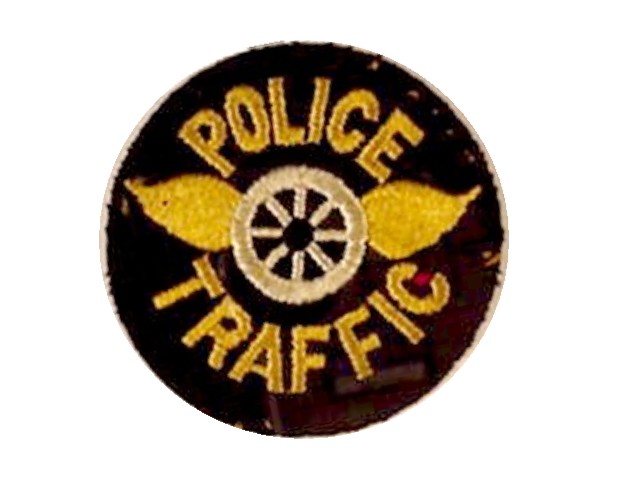
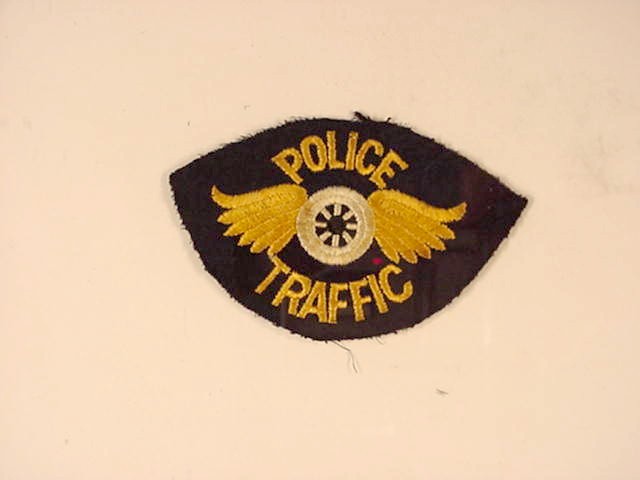
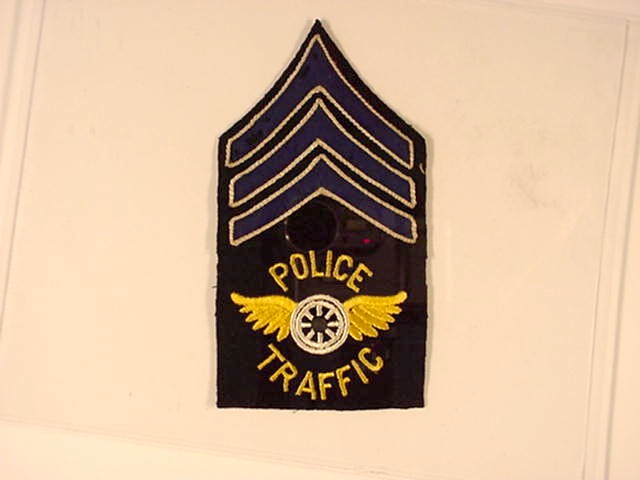
The History of the Des Moines Police Department Shoulder Patch
Police Shoulder Patch
Des Moines, IA Police
From “The Behind the Badge”
One of the most readily identifiable symbols of the Des Moines Police Department is the patch worn on the left shoulder of the police uniform. The same logo is also displayed on the front doors of all marked vehicles within the department’s Patrol Services Division and Identification Section.
The concept for the design originated with the official seal of the City of Des Moines that was used in the 1950s. This seal consisted of a picture of the west side city hall that was encircled by the words, “Seal of the City of Des Moines.” Police Lt. William J, Wood, who was assigned to the Service Bureau, is credited with designing the first police shoulder patch in 1952. Lt. Wood used the original seal of the City changing the wording to read, “Des Moines Police.” This embroidered designed was then surrounded with yellow felt material that was rounded at the top and straight at the bottom. This original design was worn on the uniforms of the Des Moines police officers from 1952 until 1956.
In 1956, the design of the patch was modified, with a more accurate depiction of the city hall building being embroidered on the yellow cloth material with a dark blue border, that was changed in shape to be straight at the top and rounded around the bottom. This design is still worn today, and is still used as the emblem on the patrol vehicles of the police department.
The History of the Des Moines Police Department Motorcycle Unit
The Spring of 1905, the police decided that citizen action is not enough. They assigned mounted Officer John Penn to patrol Grand Avenue and stop reckless “Scorching.” The first offender, Dr. Wilson McCarty, sped by Officer Penn, who spurred his steed to a gallop off in pursuit. An Ingersoll Line Streetcar blocked traffic at 19th Street and saved the honor of the police force. Officer Penn dismounted, ran to the car, vaulted into the passenger seat and instructed Dr. Wilson McCarty, that he was under arrest and should proceed slowly to the police station. The Traffic Squad nabbed its first speeder.
Things got hot for speeders after the city’s spring election of 1906. War was declared by the newly-elected and formidable alderman from the First Ward, John L. Hamery. The young son of (future police superintendent) Hamery had come close to being run down by a car, and Hamery vowed the speeding would be “a thing of the past.”
That summer, Officer Penn was back patrolling the avenue, but now as Des Moines’ first and only motorcycle policeman. Riding a Belgian-made Fabrique National four-cylinder motorcycle capable of 60 mph, he could out run any car in town. The Capital reported that Penn was “delighted with his new possession…previously the best he could do was to stand on the corner and make noise like a policeman.”
At 10 o’clock Friday night, June 8, 1906, Grover Hubbell was preparing his car for a fast evening spin down the avenue. Hubbell was the treasurer of the Iowa Automobile Club and son of the richest man in the state, and was very familiar with his big machine. But none of this mattered when he sped by motorcycle cop No. 1, John Penn. Speeding after his man Penn reportedly vowed “alderman and special police cannot beat the regular men.”
It took Penn one mile to overtake Grover, “You’re under arrest – fast driving…you can get away from me. this machine can go 40 mph without noticing it.” In front of the police judge, Hubbell protested that he wasn’t going so fast. But the Traffic Officer Penn stood his ground, “I have both a cyclometer and a speed meter on my motorcycle.” None was news to Hubbell, as he had loaned that fancy motorcycle to Officer Penn to patrol that avenue. Now he was the victim of his own kindness. Not surprisingly, next week Officer Penn was back working the desk at the police station.
The police had been without a motorcycle since Grover Hubbell retrieved his fancy Belgian motorbike from the overzealous Officer Penn. Police Chief Miller and Commissioner Hamery even hatched a cracked plan to run down speeding cars with a bicycle patrol. Luckily, the next week Hamery visited Chicago and came back sold on police motorcycles.
The next year, the police rented a 1911 Harley-Davidson motorcycle to pursue a “chug wagon Chollie,” who was terrorizing Des Moines by stealing fancy touring cars for joyrides. On May 27, 1911 he stole a car from outside the Hotel Savery and led policeman McMillen on wild chase up Grand Avenue before he escaped down 42nd Street and thoughtfully returned the car to its orginal location. He was not apprehended.
Officer Harry McMillen was chosen to be the city’s first official motorcycle cop. on May 25, 1911, after “many hours” learning to ride, he set out to patrol the Grand Avenue and Kingman Boulevard “speedways,” where he arrested many prominent citizens. When a judge questioned his powers under the state’s new but vague “Kulp automobile law,” local pressure mounted to enact stronger municipal ordinances.
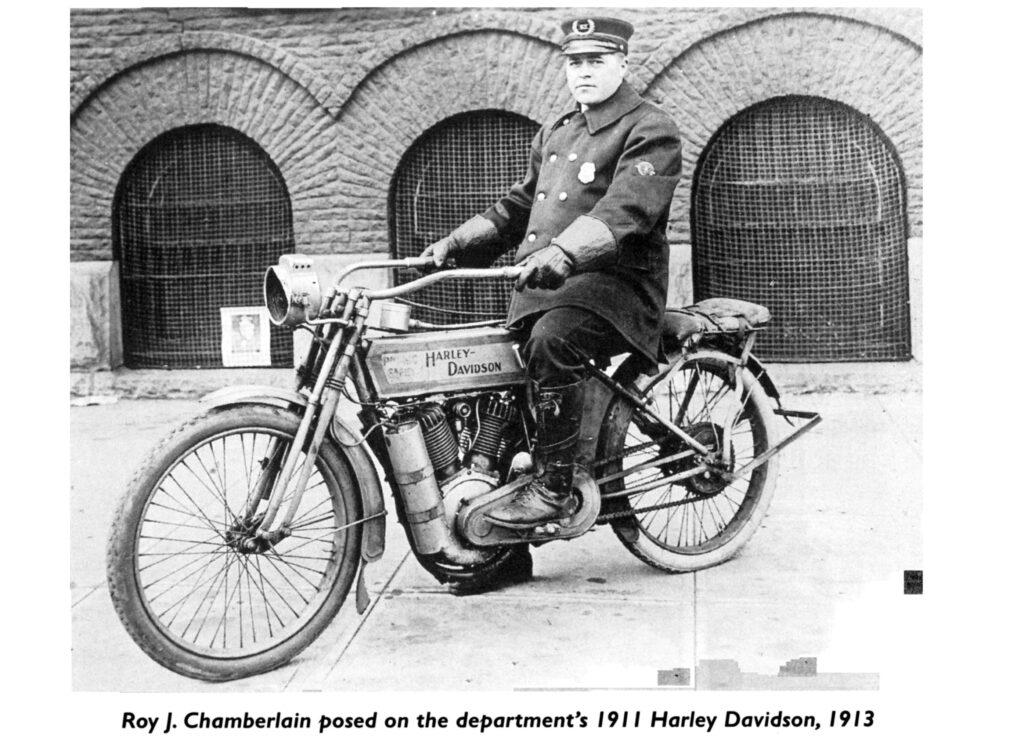
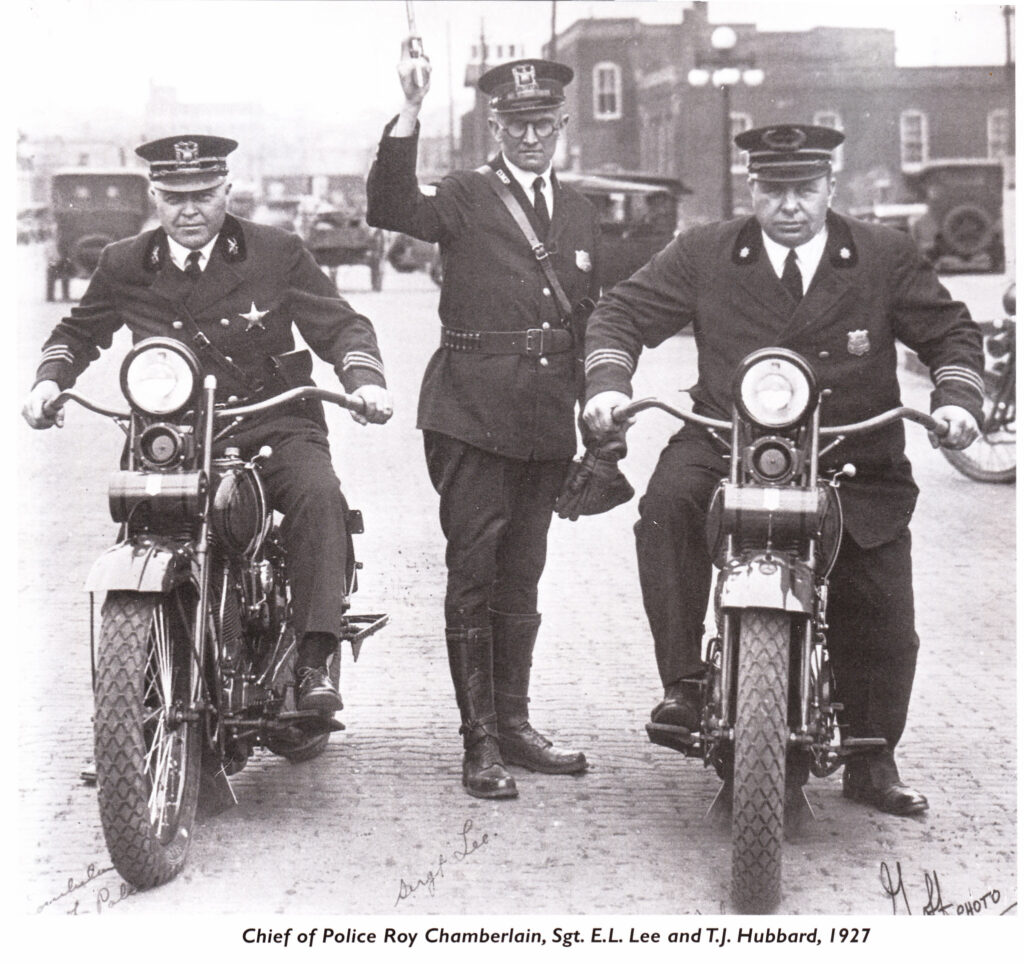
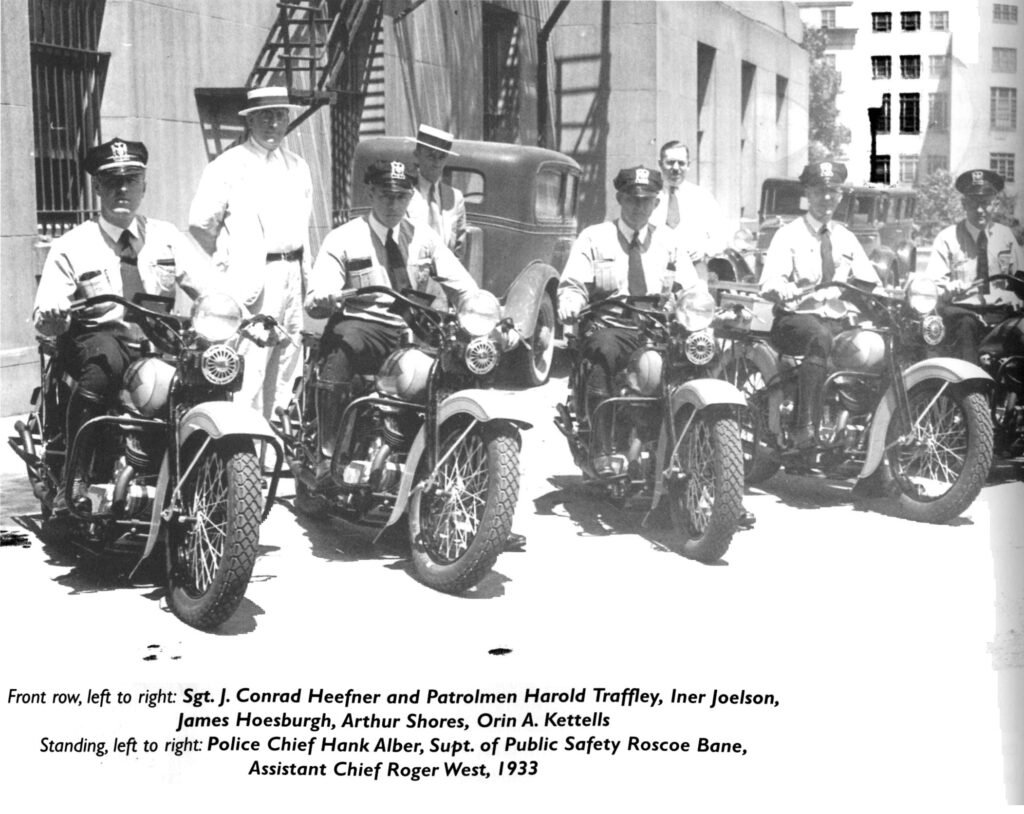
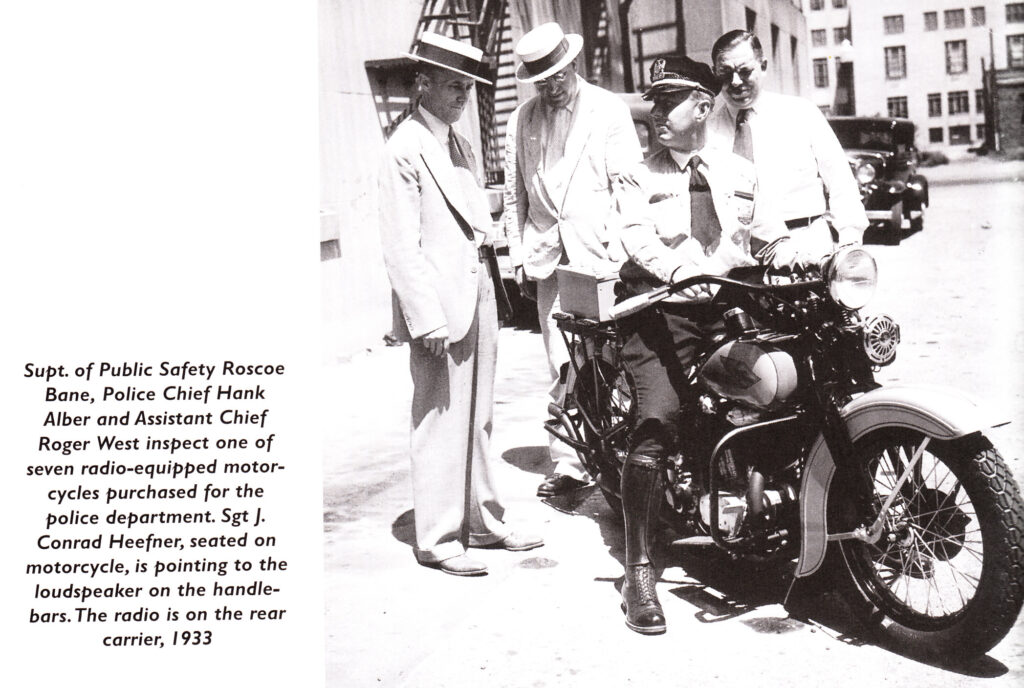
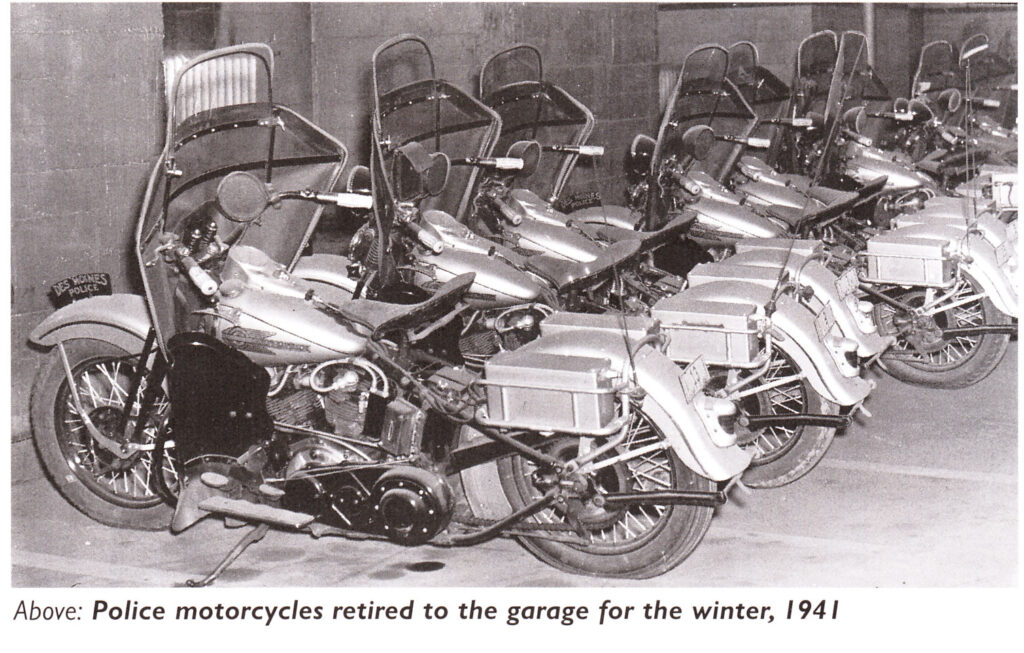
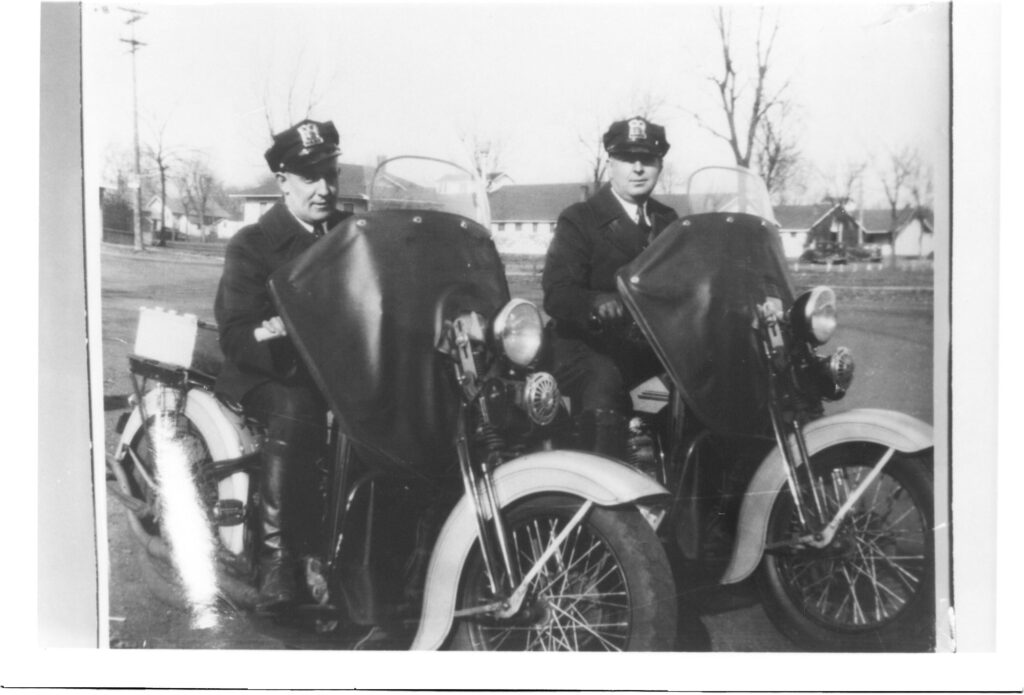
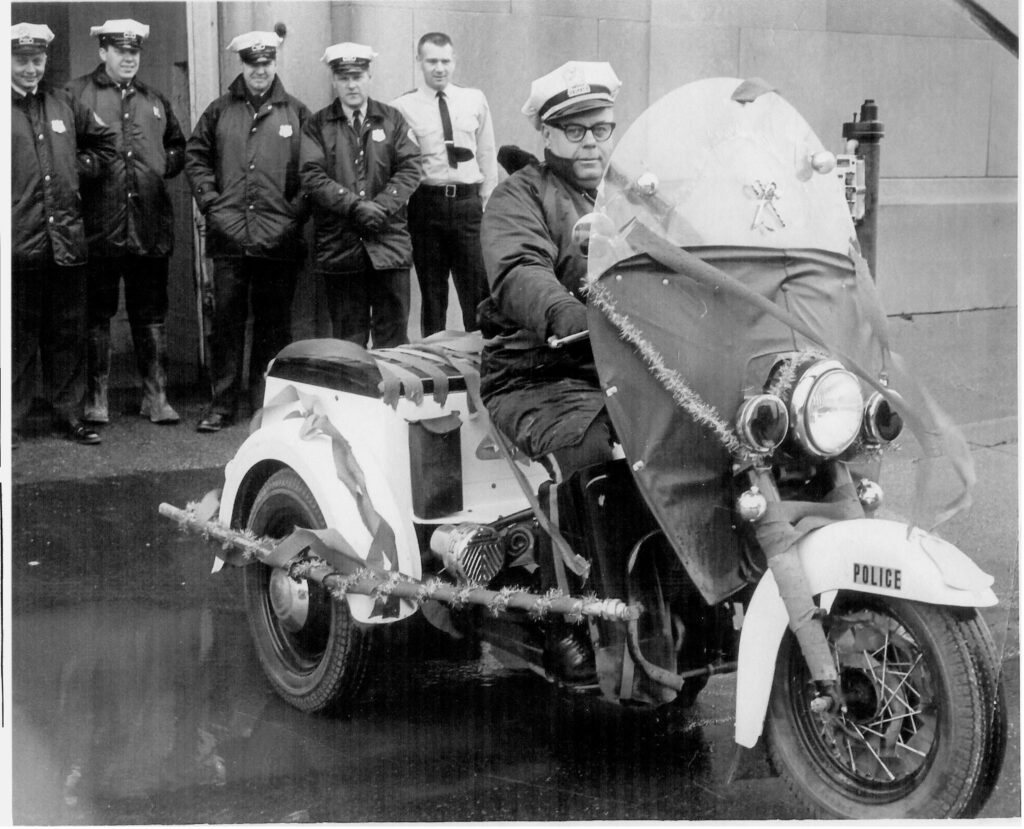
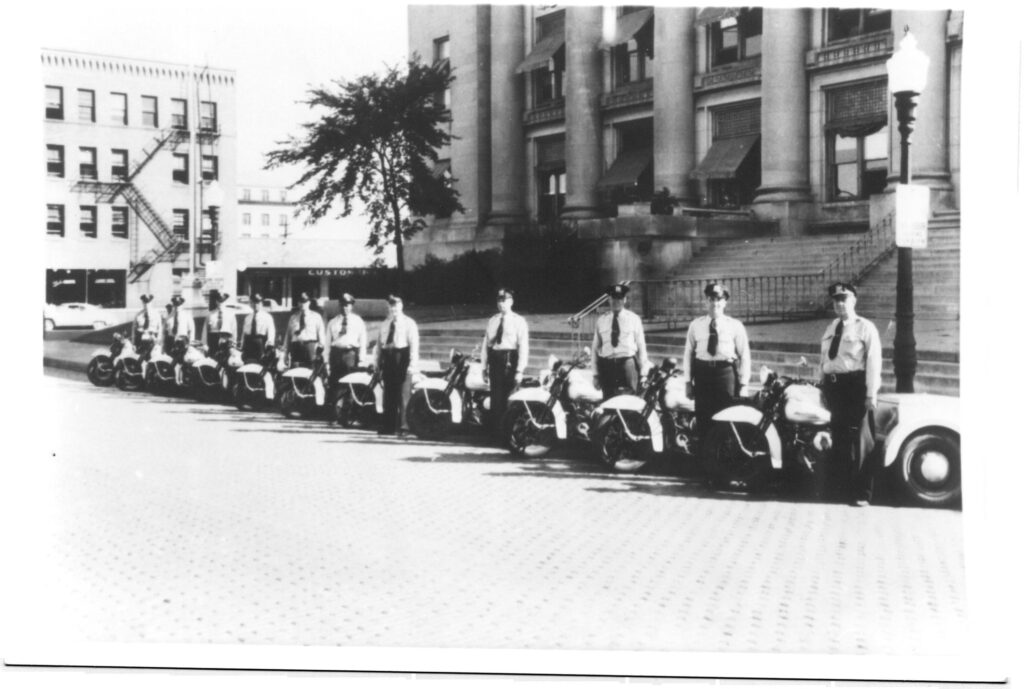
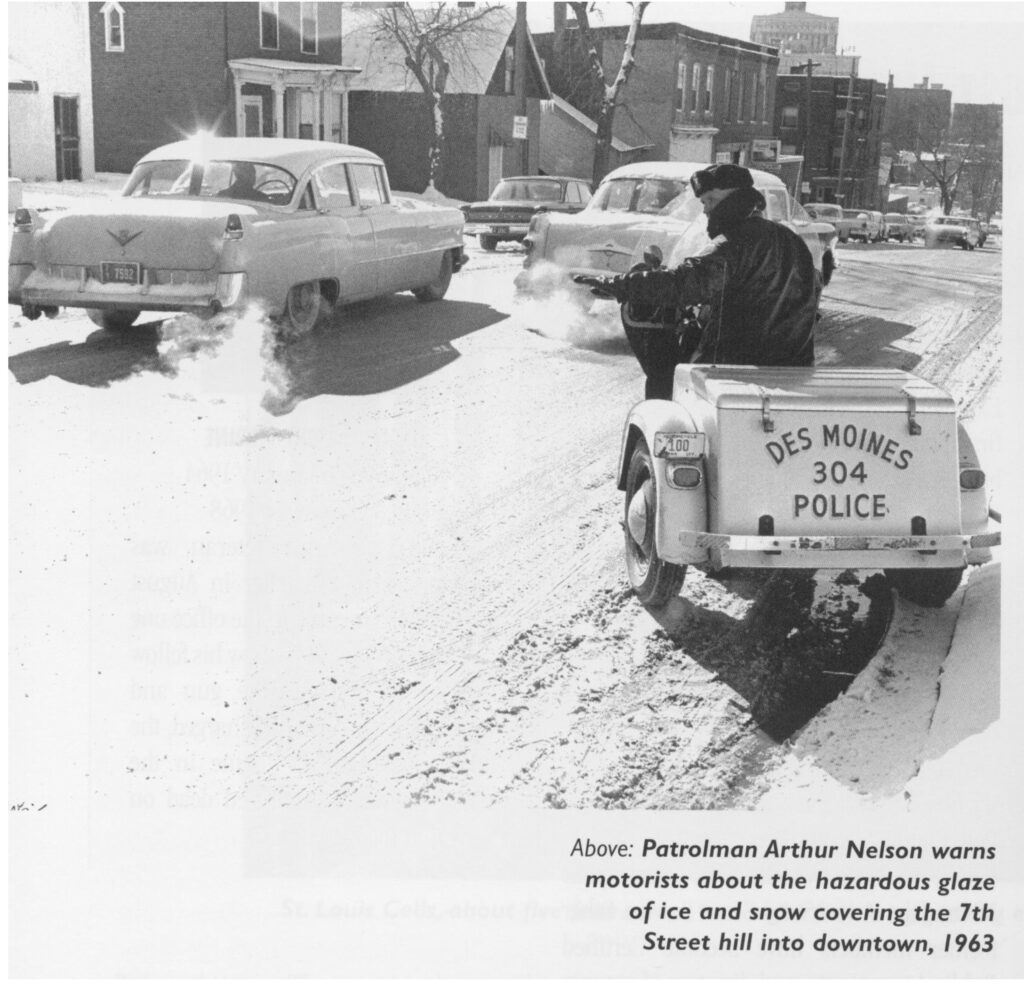
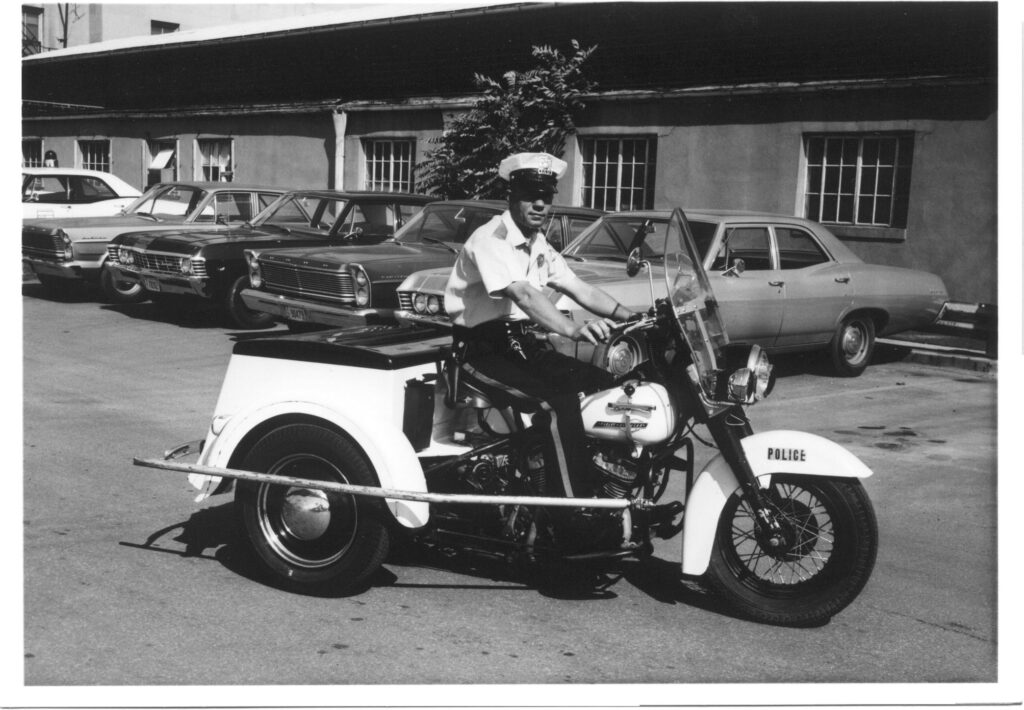
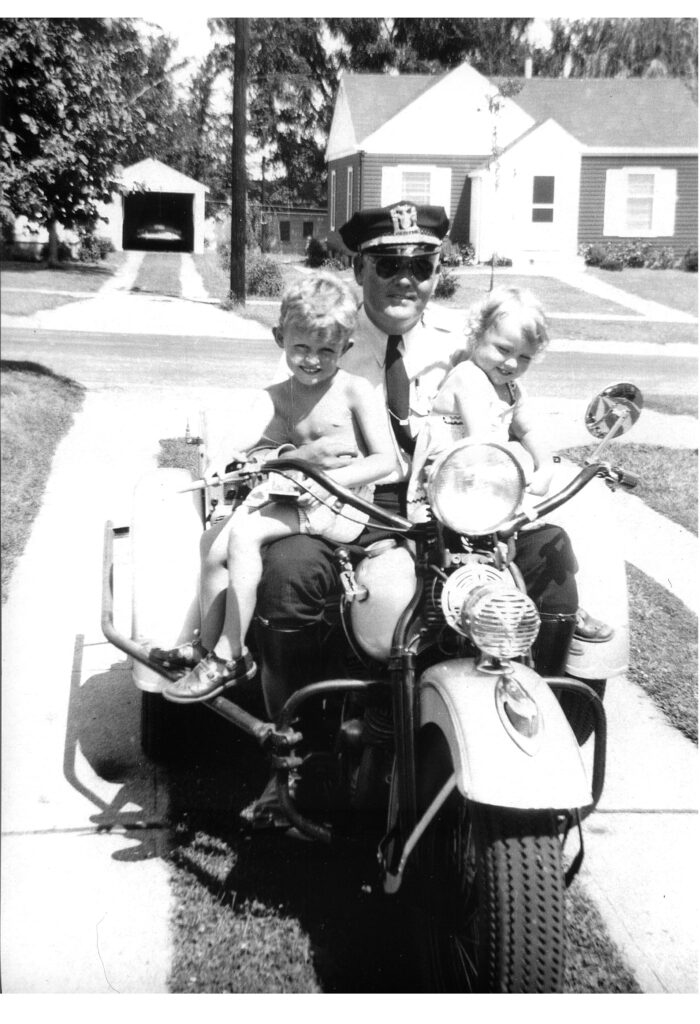
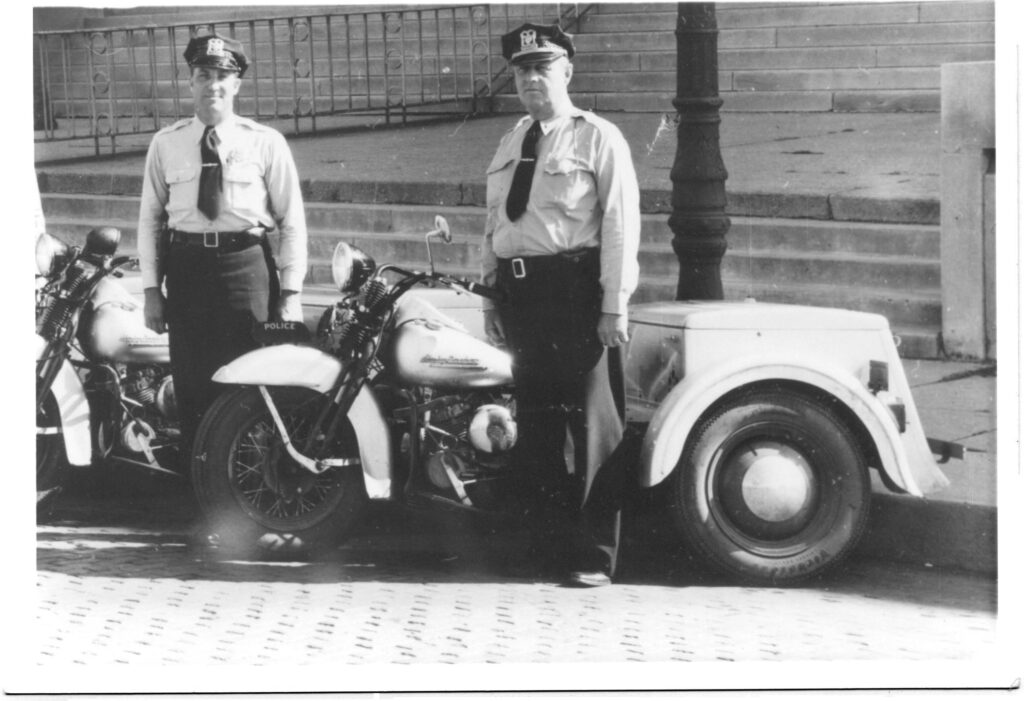
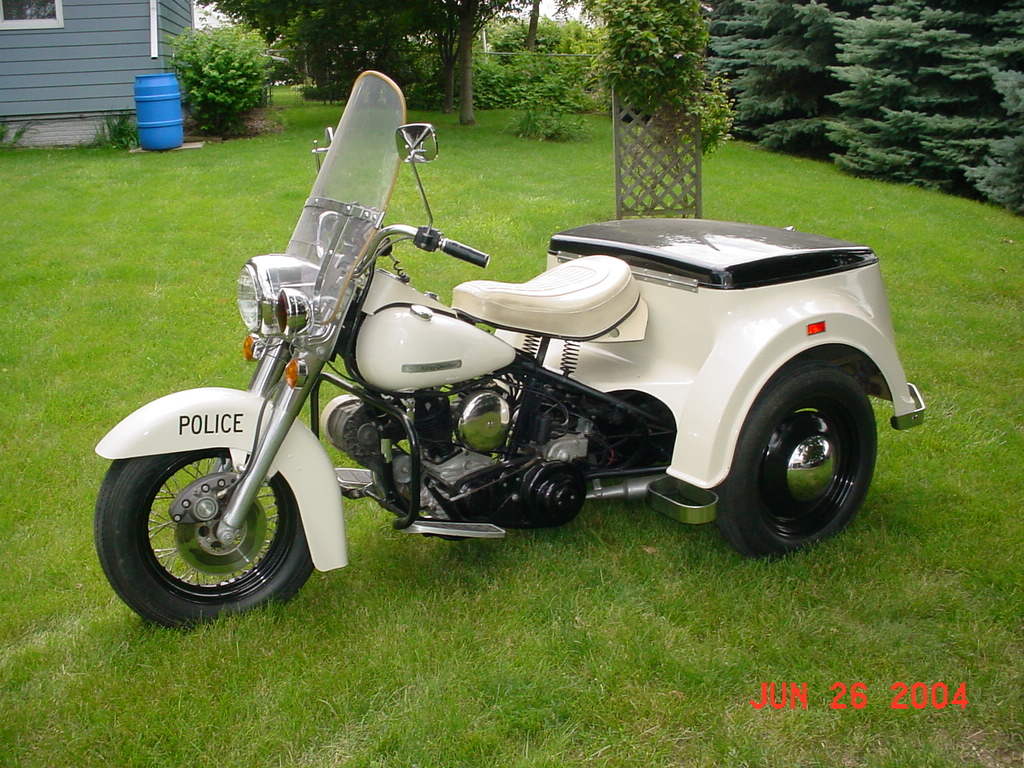
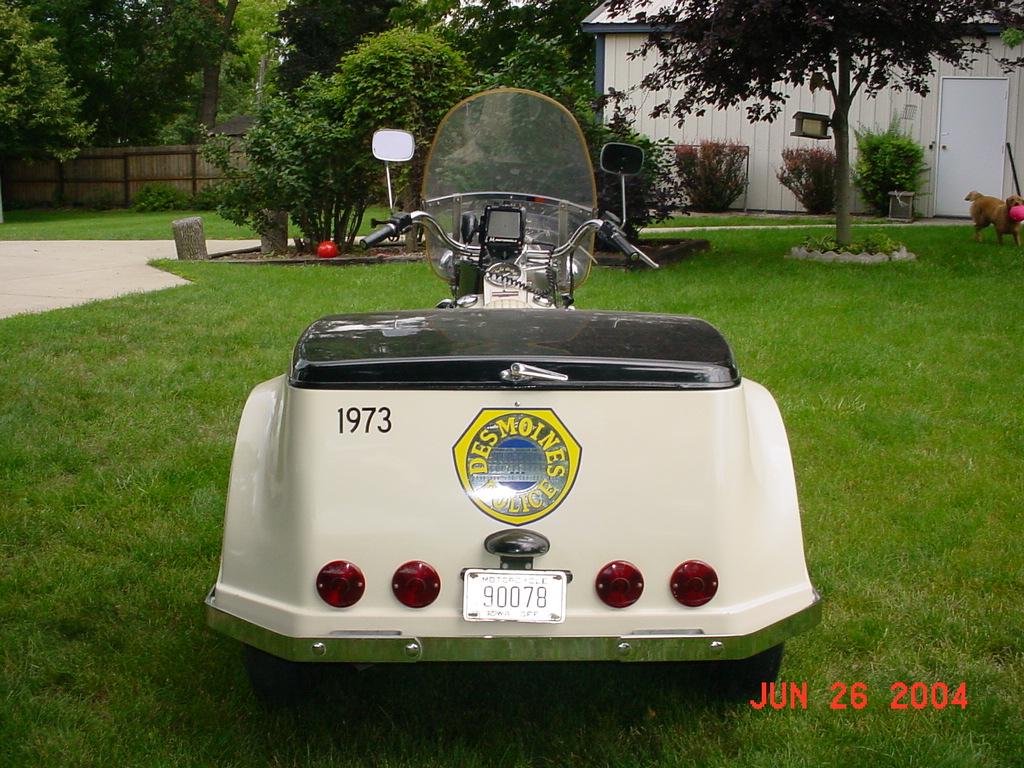
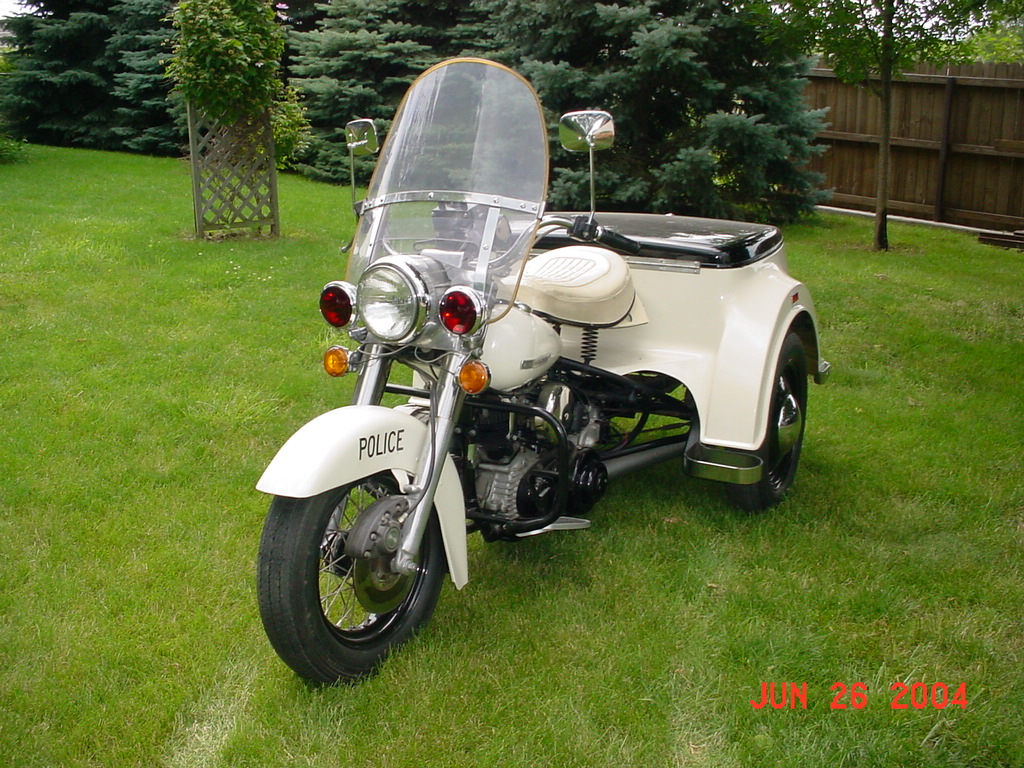
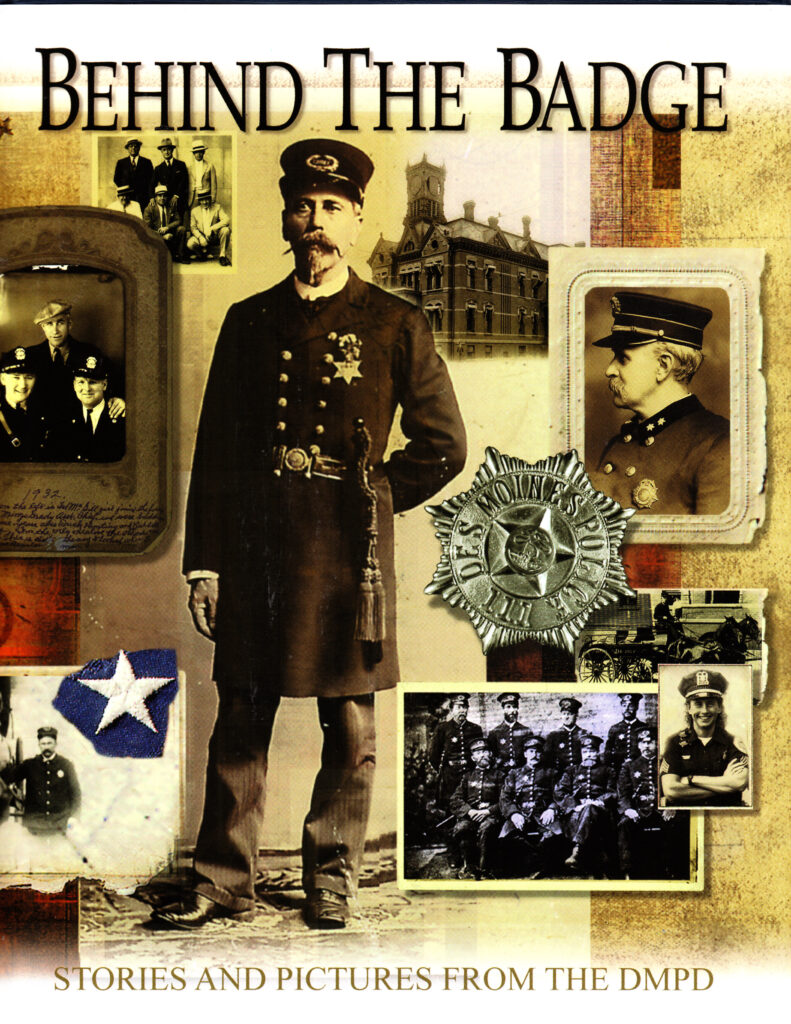
Photos and Information provided by Sgt. (Retired) Mike Leeper of the Des Moines Police Museum with full support by the Des Moines Police Department. The history was exerts from the book “Behind the Badge” The history of the Des Moines Police Department provided by the Des Moines Police Department Museum. A special Thank you to the Museum, Sgt. Mike Leeper, and the other authors of the book.
